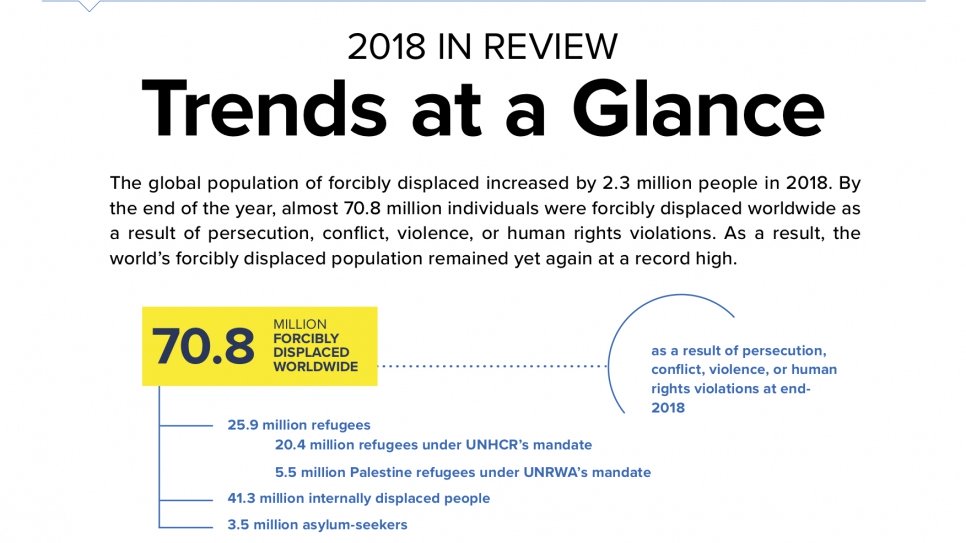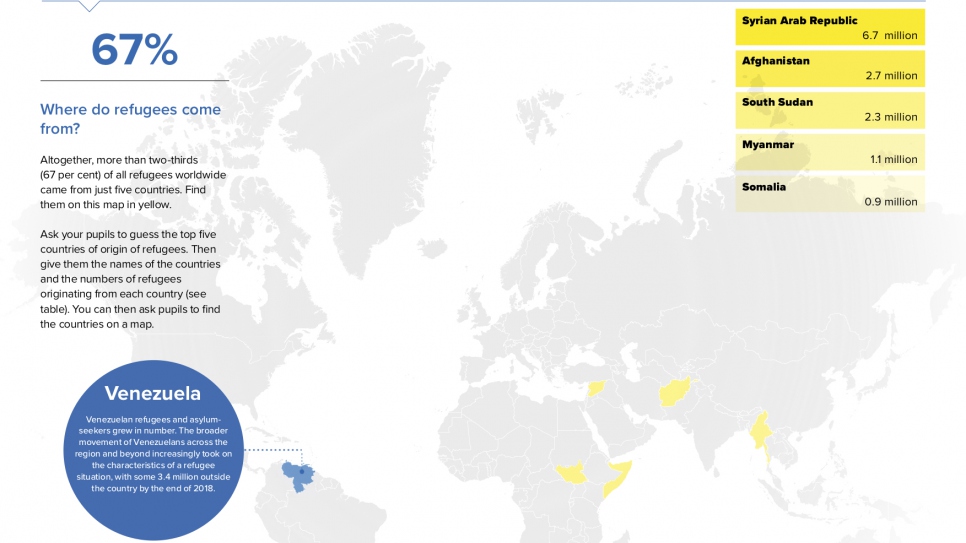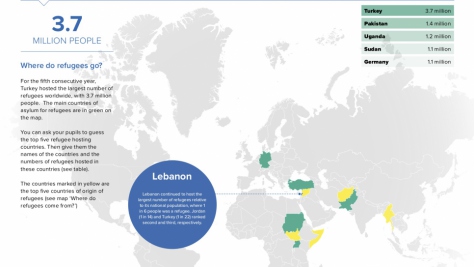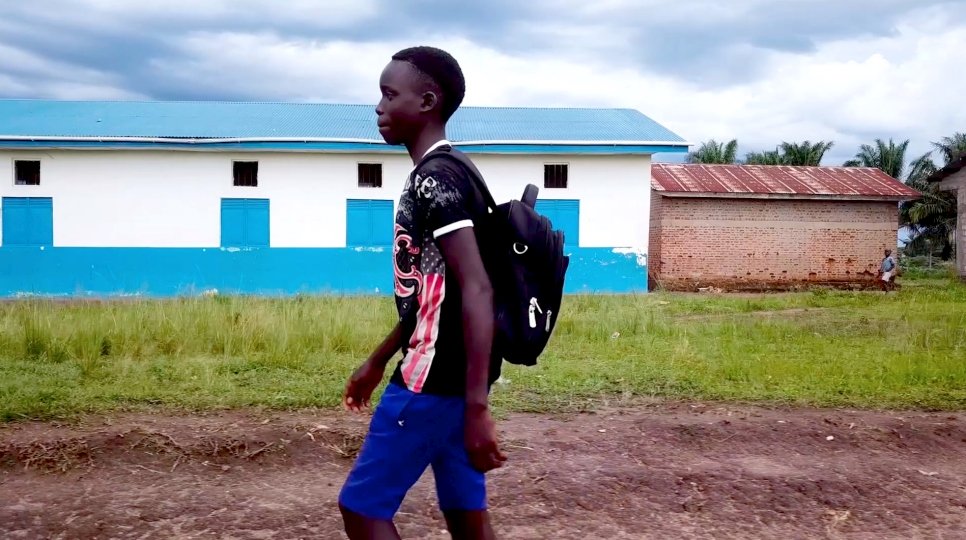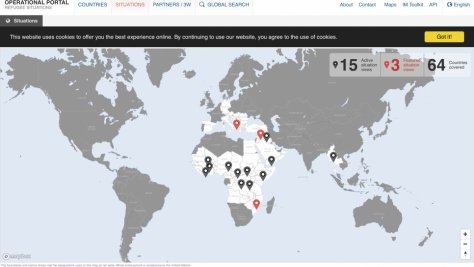With forced displacement reaching historic levels, schools all over the world are welcoming increasing numbers of refugee children. Teachers are facing new challenges in making sense of forced displacement and its complexities. Refugees and migrants regularly make headlines and the internet is bustling with information on the topic. Explaining the situation of refugees and migrants to primary and secondary school children has become part of many educators’ daily work.
In addition, training and guidance for teachers with refugees in their classrooms is not always based on best practice, and is not always easily available.
On this UNHCR Teaching About Refugees page you can find free-of-charge and adaptable UNHCR teaching materials on refugees, asylum, migration and statelessness and a section dedicated to professional development and guidance for primary and secondary school teachers on including refugee children in their classes. Use and combine these materials as you see fit in your lessons about the topic.
- Words matter
- Facts and figures about refugees
- UNHCR media materials and reports
- Teaching materials
- Including refugees in your classroom
- Other teaching resources
Words matter
Understanding the terms refugees, migration and asylum begins with understanding a few basics. The word refugee is often used as a blanket term for people displaced by war, violence or persecution. But there are different categories of displaced people, each with specific needs. Knowing what these categories mean exactly is important and will contribute to better understanding of this complex topic.
Watch these explainer animations yourself as a preparation for your lesson or training. Choose which sections you need, and use them in your own lesson plans as well. The animations are suitable for use as teaching material for pupils age 12 and over.
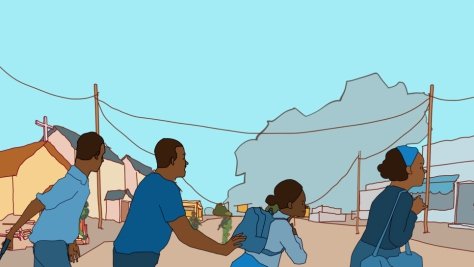
Refugees
Refugees are people fleeing conflict or persecution.
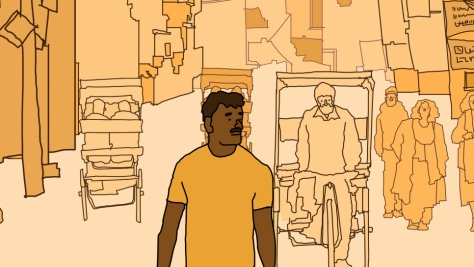
Migrants
Migrants are people moving to another country for other reasons beyond conflict and persecution.
- Watch the animation
- Download the class discussion sheet
- Read UNHCR's explainer
- Watch UNHCR's video «Words Matter»
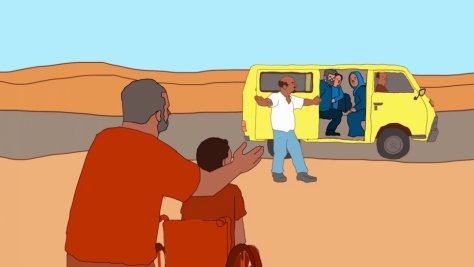
Internally displaced people
Internally displaced people are seeking safety in other parts of their country.

Asylum-seekers
Asylum-seekers are people seeking international protection from conflict and persecution.
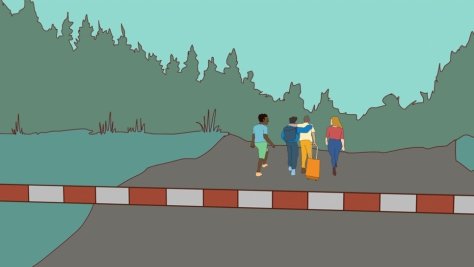
Returnees
Returnees are people who have returned home after being displaced.
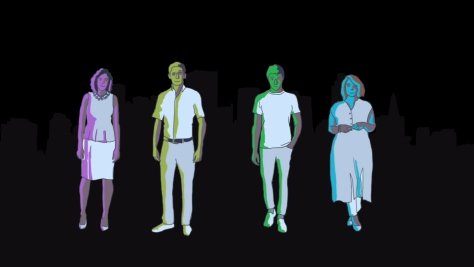
Stateless people
Stateless people do not have the nationality of any country.
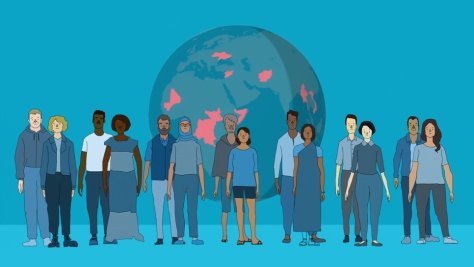
Where do refugees come from?
Refugees come from countries all over the world. More than half come from Syria and Afghanistan and Somalia.
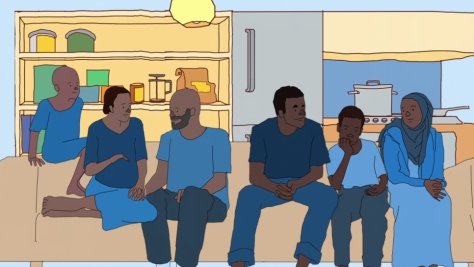
Where do refugees go?
Most refugees are in developing countries. They tend to stay in neighbouring countries.
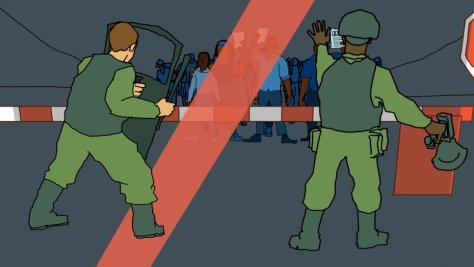
Refugee rights
Refugees cannot be sent back to their country if this puts them in danger.
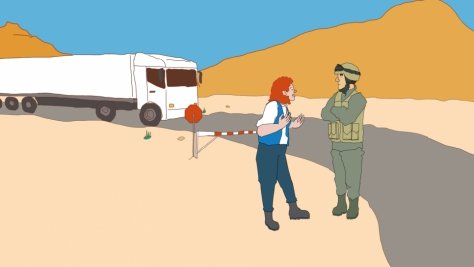
Who helps refugees?
UNHCR, governments and many other organizations help refugees. You can help too.
Facts and figures about refugees
Finding the right facts and figures about refugees and migrants can be a challenge for teachers. There is a plethora of information available on the internet from thousands of sources. However, the information provided is not always verifiable, complete or up-to-date.
UNHCR helps forcibly displaced people worldwide. We keep detailed, up-to-date statistics and data on refugees, asylum-seekers, IDPs and stateless people. In this section you will find a selection of teachers’ notes and fact sheets you may find useful for your lessons. You can create your own lesson by using and combining the materials as you see fit.
Basics
How many people are displaced?
More than 70 million people are displaced today.This is the highest number since WWII. Find all the key figures on this teachers' note.
Where do refugees come from?
More than two-thirds of the world's refugees come from just five countries. Find them on the map in this teachers' note.
Where are refugees?
Almost 9 out of 10 refugees are in developing countries. Find the countries and the figures on the map in this teachers' note.
Eye-openers
More than 70 million people are forcibly displaced today. That means they are in danger because of violence, war or persecution and had to leave their houses and go elsewhere to be safe. They now live as refugees, internally displaced people or asylum-seekers. (Watch the materials in the Words Matter section if you want to know what these categories mean)
But what does 70 million people really mean? Why do so many people flee? How many are women? How many are children? How long do people live as refugees? Use these teacher notes to reflect with your pupils on refugee numbers. Link what you teach to the life of refugees and to their own life in school and elsewhere. Suitable for teaching children in secondary education (age 12 and over).
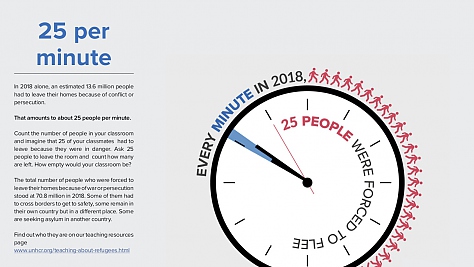
25 persons per minute
Every minute, 25 persons are forced to flee because of violence or persecution. A staggering number. Visualize it in your classroom.
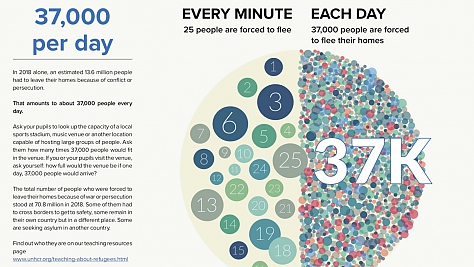
37,000 per day
Every day, 37,000 persons are forced to flee because of violence or persecution. Can you imagine such a large group? Try to visualize it.

More than 70 million
More than 70 million people are now displaced worldwide. How many football stadiums could you fill with such an enormous population?
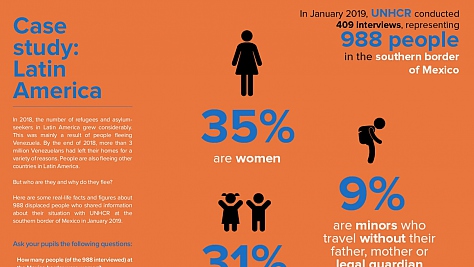
Case study Latin America
Many people are fleeing violence and persecution in Latin America. In January 2019 UNHCR questioned almost 1,000 displaced people at the border of Mexico. Can you guess who they are and why they fled their countries?
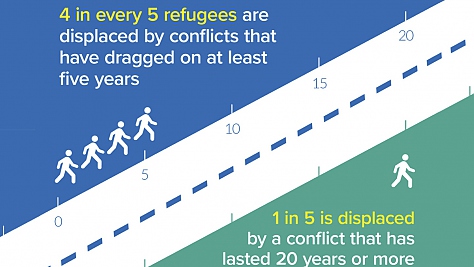
Refugee for a long time
Many people live as refugees for a very long time. Find out how many people had to flee their homes for 5 years… or much longer.
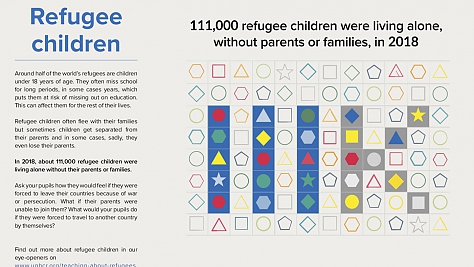
Children fleeing by themselves
Many refugees are children younger than 18. 111,000 of them had to get to safety without their family or parents. What would your pupils do if they had to flee without their parents or family?
Around half of the worlds’ refugees are children. More than half of the refugee children of school age, 3.7 million, are out of school.
They have no opportunities to get an education, which can affect them for the rest of your life. What would it mean if only 1 out of 4 children would be in your secondary school? Where do most refugee children live? And how would you go to school if you were forced to flee to another country? Use these teacher notes to reflect with your pupils on school life and the life of refugee children. Suitable for teaching children in secondary education (age 12 and over).

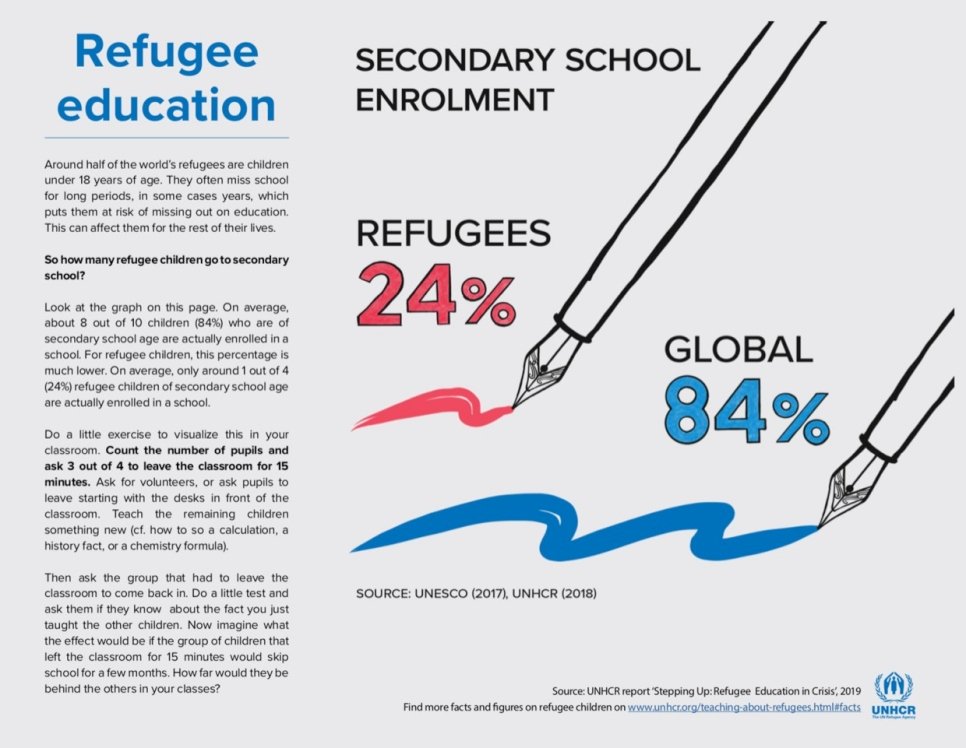

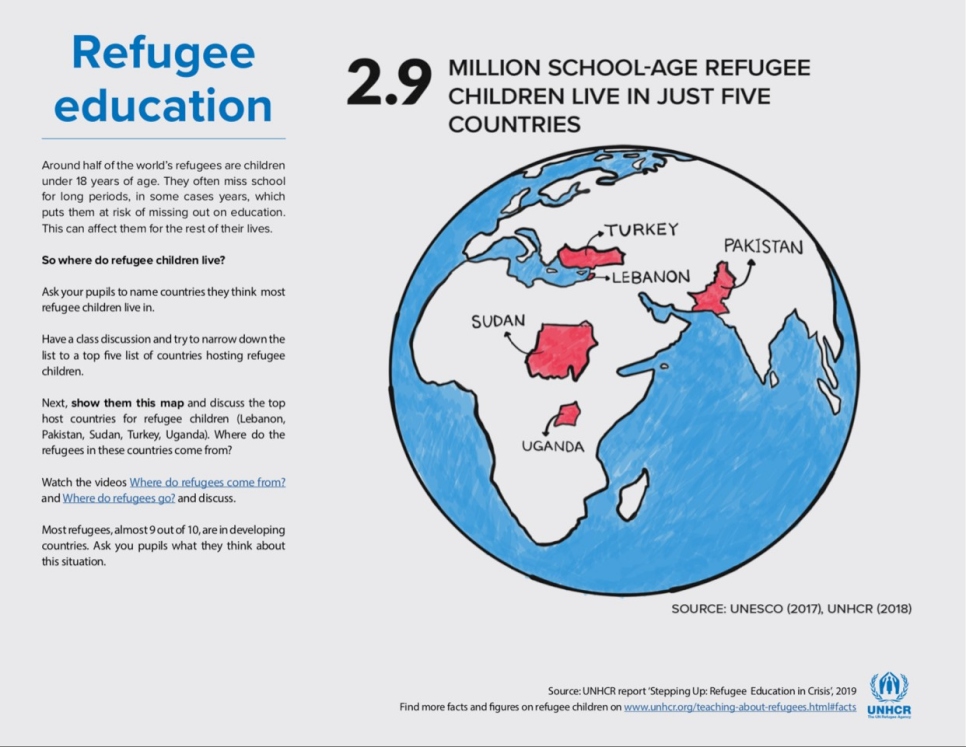
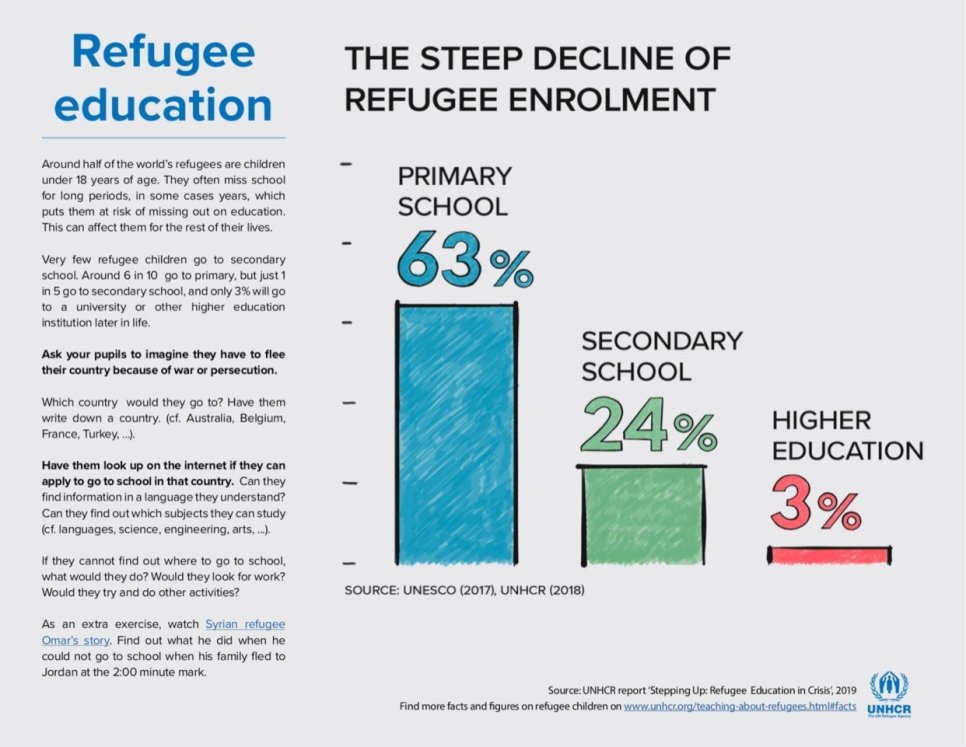
Top of his class
Watch and discuss the story of Maliyamungu Gift, a young South Sudanese refugee. He dropped out of school because of war in his country but is now top of his class in Congo. He wants to become a teacher and created his own solar-powered lamp so he can study in the evenings.
UNHCR media materials and reports
If you want to read more about refugees, asylum and migration to prepare your lessons, you can read UNHCR’s main publications and on-line resources on refugees, asylum and migration. Some of these materials may also be used for research assignments for children in higher secondary education.

Global trends
UNHCR's reports contain all details on forced displacement in the world.
UNHCR Data Portal
UNHCR's facts and figures website on refugee emergencies. Click on the locators to view the latest maps, tables and graphics on refugee emergencies.
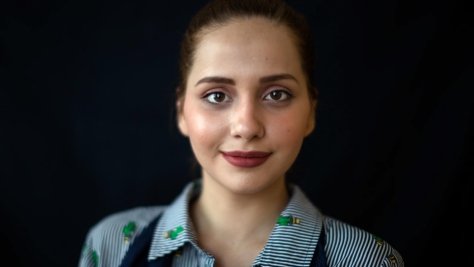
2019 education report
More than half of the world's school-age refugee children do not get an education. This report tells the stories of some of the world's 7.1 million refugee children of school age under UNHCR's mandate.
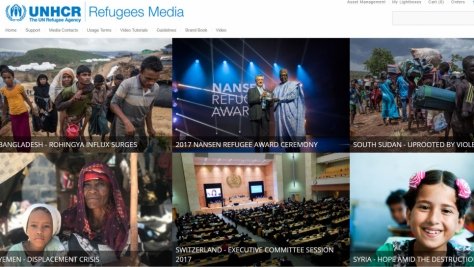
UNHCR multi-media
If you are looking for a compelling video, web article, photo report or other multi-media story on refugees, please visit UNHCR's multi-media channels.
- Go to UNHCR's Youtube channel
- Go to UNHCR's Media website
- Go to UNHCR's Facebook
- Go to UNHCR's Twitter
Teaching materials
Here you can find teaching materials about refugees, asylum, migration and statelessness for all age groups in primary and secondary education.
Click on the age category and find lesson plans, activity guides, videos and other materials to use in your class.
Including refugees in your classroom
With forced displacement at a record high since World War II, many teachers now have refugees or asylum-seekers in their classroom. Teaching newcomers often comes with specific needs relating to language acquisition and adaptation to a new culture and environment. Some refugee children may suffer from stress or trauma preventing them from participating fully in school activities, and requiring specific support.
Below you will find some professional guidance to support you

Effects of stress and trauma on children
Executive function is often compromised when children experience stress and trauma. This video by Harvard University 's Center on the Developing Child explains some challenges that children suffering from stress and trauma may experience.
- Watch the video by the Harvard Centre on the Developing Child
- Download the activity guide for 5-7 year olds
- Download the activity guide for 7-12 year olds
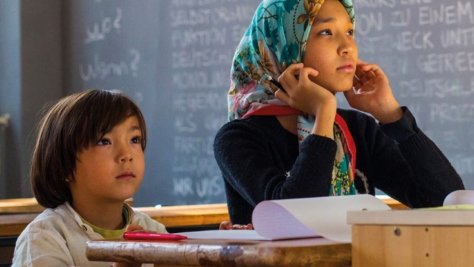
Successfully including children experiencing stress and trauma in your classroom
This guide provides guidance on including these children in your class and school.
- Download UNHCR's Guidance for teachers and schools
- Activity sheet: download the cards for the number matching activity
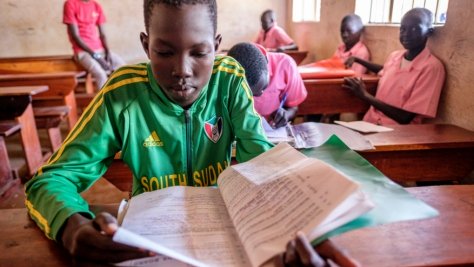
Understanding language acquisition
Guidance on how to optimise language learning environments for non-native speaking children.
Other teaching resources
Many organisations have created excellent teaching resources on refugees, asylum, migration and statelessness.
On this page you’ll find a curated selection of teaching materials from NGOs, governments and other organizations, which you can search by language and age group.

